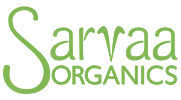Planting Trees by Purchasing Superfood
Sarvaa Superfood has been partnering with Eden Reforestation Projects to help plant trees around the world. For every $12 that you spend on Sarvaa products, one tree is planted through Eden Projects. You can learn more about Sarvaa's collaboration with Eden here.
Waste Reduction at Our Facility
We reuse or recycle so much, that Sarvaa Superfood now only generates one large bag of trash per month!
For example, we even spend the extra money to purchase the absolute highest quality virgin organic coconut oil in glass jars instead of plastic tubs. We don't put these jars into the typical recycling stream where a great deal of energy is wasted crushing the glass and transporting the heavy crushed glass to road construction projects or to and re-melting factors. Instead we donate the nice big jars to a local non-profit organization who simply wash the jars and reuse them in several clever ways as part of their mission.
Recycling Boxes
We reuse as many of the boxes that get shipped to us as possible. The damaged boxes all get recycled as efficiently as possible.
Recycling Glass
As mentioned above, we find organizations to that will reuse any glass jars or bottles that are shipped to us by our ingredient suppliers.
Recycling Plastics
We allocate staff time to actually wash the empty plastic bags that are used so that they're eligible for higher quality recycling programs. We don't generate any plastic bags to in our bulk production processes, but we do receive some plastic bags from a few of our ingredient suppliers, but these are washed and re-used or recycled.
Reducing Food Waste
Food waste is now down to around one quart container per month.
Food-to-Packaging Ratio
We strive to always be in the top 5% of packaged food companies in the U.S. in terms of Food-to-Packaging Ratio. What is the definition of Food-to-Packaging Ratio? It means that there are more ounces of food than ounces of packaging. You get more food, and waste less packaging when you're done with the food.
At Sarvaa, we strive to give you more nutrition and less waste when you're done. If you purchase a product that comes in a glass jar, you can reuse that jar for other things in the future. This action equals no waste.
One of the most common offenders of poor food-to-packaging ratio is breakfast cereal. A lot of cereals have approximately 10 oz of food in 3 oz of packaging. And the packaging has both a plastic bag and a large box covered in toxic ink. Yikes.
Nutrient-to-Packaging Ratio
Because we include no Empty Calorie Ingredients like cheap grains, fruit juices, or sugar, we're in the top 3% in the U.S. of Nutrient to Packaging Ratio. What does this mean? Simply put, it means that we employ only super high nutrient-density ingredients in the absolute minimum amount of packaging. Compare this to a bag of potato chips that is only half filled with very little nutrients in a large plastic bag.
Toxins Directly Generated in Production
We do not generate any toxins directly in our Production Facility. However, we do indirectly generate toxins when we heat our building in the winter with natural gas. Luckily we have a good amount of solar gain in the Winter.
Electrical Consumption
We strive to use as little electrical power as possible. We retrofitted our facility with all LED lighting two years ago.
Cleaning Materials
We only use non-toxic cleaning products in our facility.
